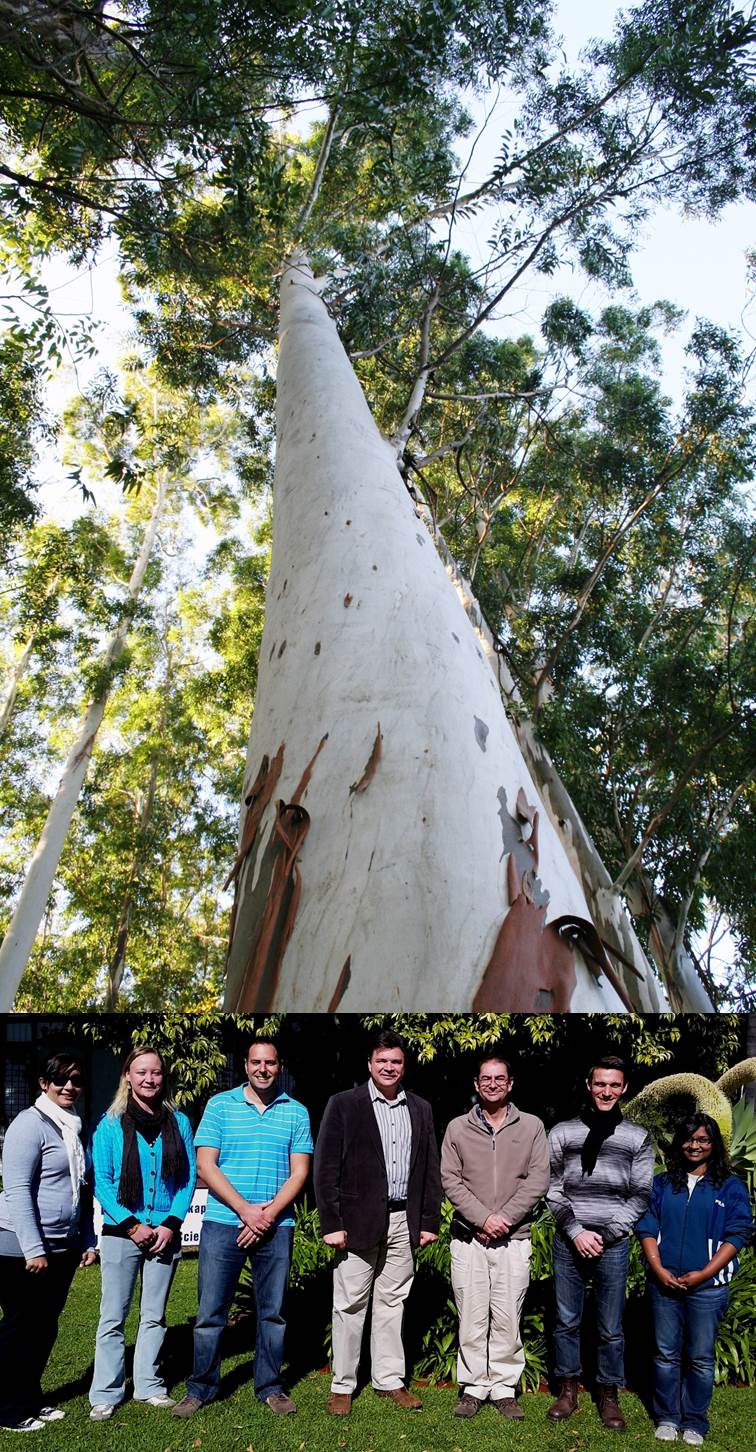First FABI research paper in NATURE! 2014-06-11
We congratulate Prof Zander Myburg and several other members of the FMG (Forest Molecular Genetics) Research Group in FABI with the publication of the first full research article from FABI to appear in the prestigious journal Nature. The article announces the sequencing and release of the complete genome of Eucalyptus grandis. It was released online tonight (11 June 2014) and will appear in the print edition of the journal on June 19th.
Eucalyptus grandis is one of the most widely planted commercial forestry crops globally and is grown mainly for timber, pulp and paper production, but increasingly also for “chemical cellulose” – a form of pure cellulose that is used in a wide variety of industrial products from textiles to pharmaceuticals. The availability of the complete genome sequence of the tree will contribute to a deeper understanding of the genetic determinants of specific characteristics in these trees. In the longer term such knowledge might enable the breeding of trees that grow faster, have higher quality wood, use water more efficiently and will cope better with climate change.
The project to sequence the Eucalyptus grandis genome involved 80 researchers from 30 institutions across 18 countries. It took the consortium five years to sequence and analyse the 640 million base pair genome that contains more than 36 000 genes. Prominent co-leaders on the project includes Prof Dario Grattapaglia of the Brazilian Agricultural Research Corporation (EMBRAPA) and Catholic University of Brasilia; Dr Gerald Tuskan of the Oak Ridge National Laboratory (ORNL) and the BioEnergy Science Center (BESC) and US Department of Energy Joint Genome Institute (DOE JGI); Prof Dan Rokhsar of the DOE JGI and Dr Jeremy Schmutz of the DOE JGI and the HudsonAlpha Institute for Biotechnology. The US Department of Energy was a major funder via its Joint Genome Institute in Walnut Creek, California, where most of the DNA sequencing was done.
South Africa’s Department of Science and Technology (DST), together with forestry companies Sappi and Mondi, supported Prof Myburg and his team by funding the construction of the genome map used as a scaffold for genome assembly, as well as the sequencing of expressed genes used for annotation of the genome. This article is an excellent example of what can be achieved when researchers in the academia are supported by the industry and government.
Photo: A Eucalyptus grandis tree and the University of Pretoria authors on the Nature article. From left to right Desre Pinard, Karen van der Merwe, Eshchar Mizrachi, Zander Myburg, Fourie Joubert, Steven Hussey, and Pooja Singh.
Other publications from the FMG group related to the Eucalyptus genome can be viewed here.


